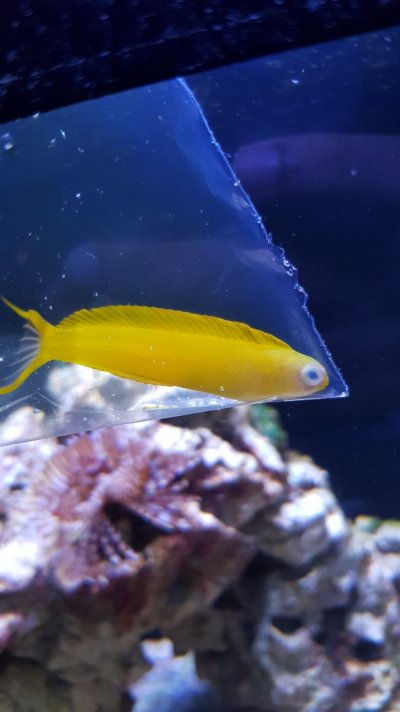I brought home this yellow canary blenny which was being kept in fairly yellow water. I assumed it has an injury and the poor water quality was affecting it but after almost a week there has been no positive change. Today there looks to be a small flap open where water can enter the eyeball and the raw area around the eye has not improved. He's been hiding constantly and not eaten since bringing him home but is venturing out today.
I have methylene blue and malacyte green on hand but I'm not sure if it's safe to use those chemicals with the eyes ruptured. What should I do??

I have methylene blue and malacyte green on hand but I'm not sure if it's safe to use those chemicals with the eyes ruptured. What should I do??















